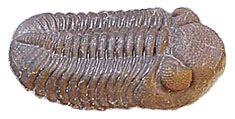Adventures on Earth for January 19 edition of The Review
By George E. Beetham Jr.
Severe weather has been responsible for disasters around the world: flooding in Australia, landslides in Brazil, cold in Europe, snow and cold in the American southeast.
Meanwhile, the Arctic is enjoying somewhat warmer than normal temperatures.
Much is due to the current La Nina weather pattern. Here in the Northeast and Mid-Atlantic regions, that means more moisture is in the air, hence more precipitation.
Cold air, meanwhile, has been flowing southward from the Arctic. This has put the Mid-Atlantic region north of the jet stream, the boundary between colder air and warmer air.
Low pressure riding along the jet stream has brought snowfall. If the jet should move northward, we will get rain (rain is in the forecast for this week, but after a snowfall).
These storms are known as nor’easters. Circulation around the low is counter-clockwise, so as the lows approach the Atlantic Coast, the low picks up relatively warm and moisture-laden ocean air and circulates it east and southeast over the Mid-Atlantic.
It is at this point that nor’easters can be their most problematic. This winter, continental air had been north of the jet stream, hence it is colder. As the moisture flows off the ocean it meets the cold air and the moisture precipitates out as snow.
While we might grumble about having to shovel snow, we are getting off easy. The La Nina effects have reduced food crops around the world, raising prices and causing concern, MSNBC reported last Friday.
Between too much rain where it is not needed and not enough where it is needed, crops are either subjected to flood or drought. Coupled with the fact that some 30 percent of the U.S. corn crop is being diverted to ethanol production, supplies are short around the world.
The concern is over the potential long term results of the weather anomalies. The National Weather Service Climate Prediction Center is predicting the La Nina will last into spring at least with concern it could stretch into summer.
The center believes, however, that the La Nina will slowly weaken over that time.
In the meantime, we can expect a nearly constant parade of nor’easters moving across the region bringing snow when fronts stall south of us and rain when fronts stall north of us.
With nor’easters, forecasters have a difficult time making forecasts. Movement of tens of miles in the path they take can be the difference between a blizzard and snow showers.
Another factor is the speed at which the weather patterns move. A nor’easter that moves slowly will bring more snow than a nor’easter that moves past us quickly.
And if the nor’easter should stall, expect a blizzard.
Most of the storms this winter have moved through fairly quickly. We got about 12 inches of snow back in December. Subsequent storms have brought less.
This week’s changing pattern is supposed to bring us rain, but the temperatures normally drop in late January to produce the coldest weather of the year.
Lows in the low teens occurred last week and the temperature is again expected to drop back into the teens later this week.
Clearly, neither winter nor La Nina is loosening their grips to any great degree.
The warming trend should begin late next month and increase during March.
Depending on how much the La Nina weakens, spring will follow as it always does, sooner or later, groundhog or no groundhog.

No comments:
Post a Comment